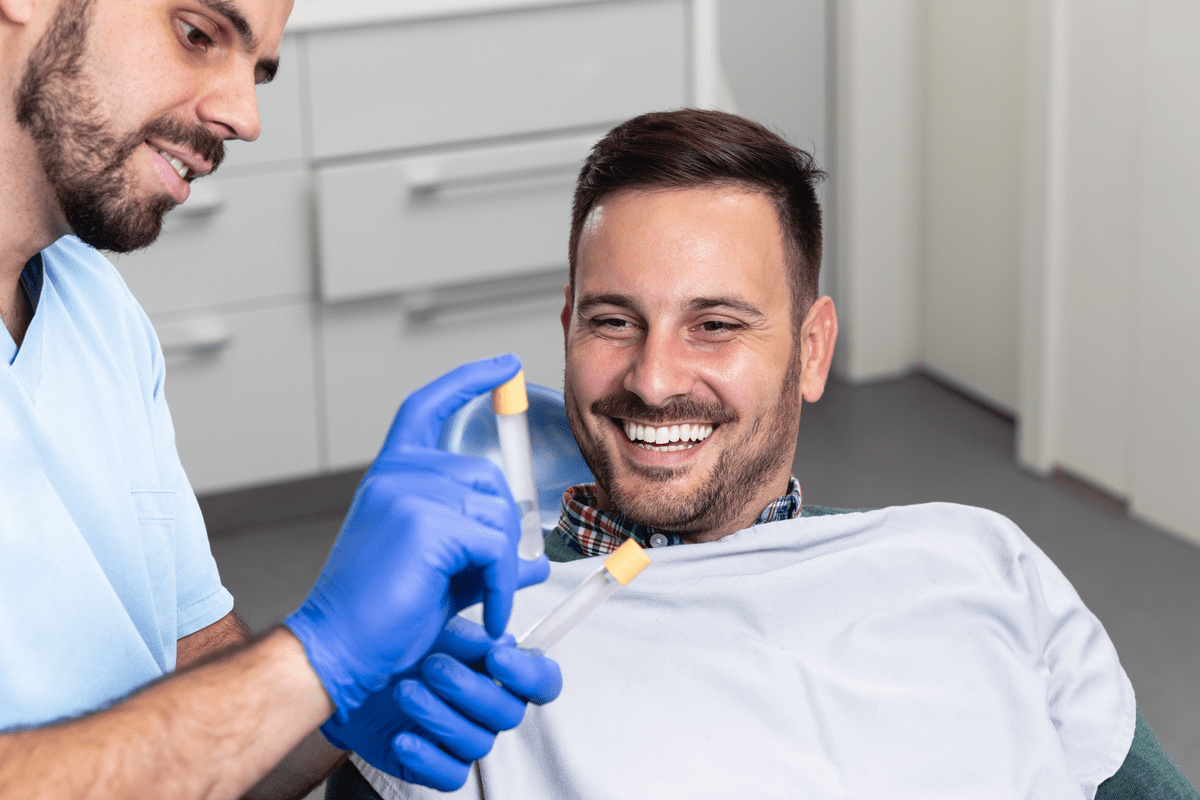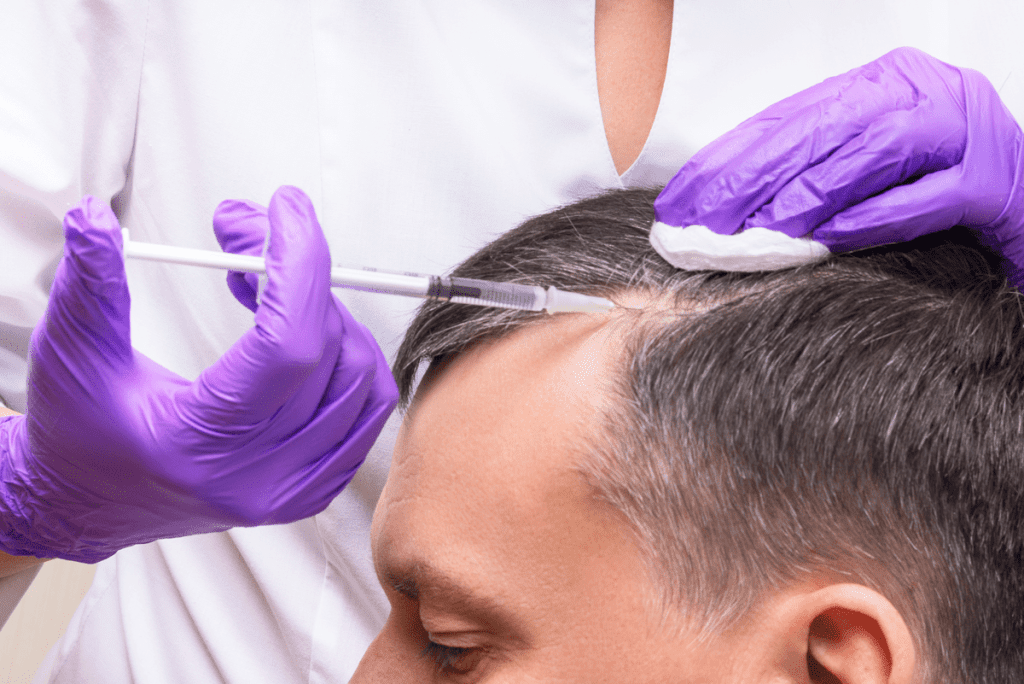
INTRODUCTION
In this article, we will discuss platelet-rich plasma (PRP) therapy, including what it is, how it is administered, potential long-term benefits, and case-by-case outcomes of prp for hair loss before and after.
You might have some reservations about undergoing PRP therapy to restore your hair. Due to the novelty of the procedure, the aftereffects have not been discussed as thoroughly as they should have been on more well-known websites.
It’s normal to be apprehensive about trying something new, but PRP therapy has been shown to stimulate hair regrowth with promising results in the past, so you might want to give it a shot.
THE PRP METHODOLOGY
Platelet-rich plasma is the medical term for this. The patient’s own blood is drawn from an arm vein, spun down into three layers in a centrifuge, and then the highest quality plasma, which is rich in platelets, is injected into the patient’s scalp via micro needling. If you’re already used to getting regular blood tests and immunizations from your doctor, PRP treatment won’t be too different from what you’re used to.
PROCESS OF PLATELET-RICH-PLASMA THERAPY
Injecting platelet-rich plasma into the scalp helps to heal damaged tissue and stimulates reparative cells by releasing growth factors. Anti-aging serums rely on collagen, which is stimulated in part by growth factors. It’s likely that this will lead to new hair growth. Prp hair treatment success rate 2021 is typically 70-90%, and the formula is 100% natural, so there are no dangerous additives to worry about.
What to expect after prp hair treatment?
Patients treated with PRP should experience minimal downtime and resume their regular routines soon after treatment. Because the PRP injection causes the injured area to fill with fluid, it is common to feel swelling and tenderness at the injection site, just as you would with a sprain. Patients can typically alleviate this pain with over-the-counter medications like acetaminophen (Tylenol).
Do not take any NSAIDs (non-steroidal anti-inflammatory drugs) like naproxen or ibuprofen for pain after your PRP therapy.
While most patients report minimal discomfort after PRP therapy, some report severe pain in the days following the procedure.
The most important quality for a patient to have is patience. Pain will not be immediately alleviated by PRP. It will take several weeks for PRP to regenerate healthy tissue. However, this is better than the months that may pass before a tendon or ligament heals on its own without the help of platelet-rich plasma.

PERMANENT IMPROVEMENTS FROM PLATELET-RICH PLASMA THERAPY
There is more than one dose available for the PRP malaysia procedure. The treatment consists of a series of injections given over the course of a few weeks and repeated after a few months, so you can expect to see results gradually. The following are some things you might observe:
HAIR GROWTH IN THE TREATED AREAS MAY BE MORE ROBUST AND DENSE.
- Thinning hair and bald spots may not be permanent.
- Your hairline may start to fill in and stop receding.
- Your sense of self-worth will rise gradually as the effects of these changes become apparent.
- I know what you’re thinking, but you have to start believing it even if it sounds too good to be true. The findings suggest that PRP therapy may be effective in its claimed applications. To put your mind at ease, let’s go over a few of those examples.
STUDIES OF PRP CASES
Platelet-rich plasma therapy is a recently developed treatment for hair loss. However, there is a substantial body of research and clinical experience showing that it can help people who are dealing with hair loss. Let’s take a look at a few scenarios and what they might portend for PRP patients in the long run.
Fifty men with androgenic alopecia (male pattern hair loss) participated in a 2017 study to confirm or refute the effectiveness of PRP treatments. They had PRP injected into the scalp on the left side. When it came to the right side of their bodies, they only received a saline injection. The results show that new hair began growing and existing hair thickened on the left side.
Ten men with androgenic alopecia were evaluated in another study published in 2015. PRP was injected into the scalps of these men over the course of three months, and the results show that their hair grew denser and stronger at the roots. (Click here for more on this research.)
Eleven patients with alopecia were treated with PRP in 2014. The patients had previously tried alternative treatments for hair loss without success. Over the course of three months, this group received four PRP injections, and they noticed a significant improvement in hair growth and root strength, as well as a reduction in the number of hairs pulled out during the test. PRP treatments are likely effective and economical, the authors write. (Read on for details about the research.)
If you’re curious how to apply for PRP in Malaysia, this articledemonstrates that PRP treatments have a high probability of promoting hair regrowth that is both stronger and thicker than before. Nexus Clinic is thrilled to prove this promising development if you’re considering PRP Treatment.

IS THERE A PARTICULAR TYPE OF PATIENT THAT RESPONDS BEST TO THESE THERAPIES?
Who Gains the Most from PRP Therapy?
While PRP for hair procedures have been shown to benefit patients suffering from a wide variety of hair loss conditions, the best and most consistent results have been seen in a select few groups. These categories include:
Male pattern baldness sufferers. Male and female pattern baldness are both names for the same condition. It’s not just men who experience hair loss; women can also be affected and treated.
Those whose baldness is relatively recent. This is because the longer you wait to seek treatment, the less likely it is that you will see improvement from it.
GETTING GOOD RESULTS WITH PRP HAIR RESTORATION
If you are interested in PRP therapy, you should discuss it with a board-certified dermatologist to see if it is right for you, but there is no guarantee that you will qualify for the procedure. If it turns out that you are a good candidate for the operation, you can look forward to the following routine:
There will be three PRP injections administered over the course of four to six weeks.
Injections for routine maintenance every four to six months.
It’s possible that if you show up for your scheduled appointments and give the treatment a fair shot, you’ll get results that restore your self-esteem and make you happy again.
Keep in mind that only a dermatologist who is board-certified and has a license to practice medicine in their state should perform PRP. These are not things you can do on your own; you should consult a qualified medical professional.







